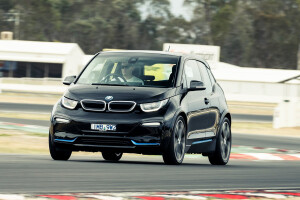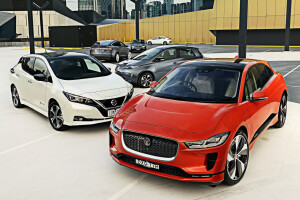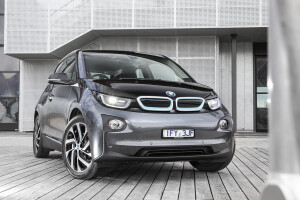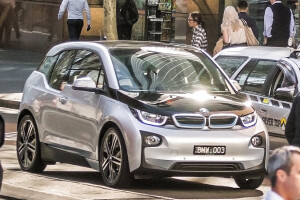Latest Review

Hyundai Ioniq Electric Premium and BMW i3s comparison review
Whether you're shopping for something mainstream or premium, these two EVs have you covered
It’s dangerously misleading to refer to any electric vehicle as being “entry level” these days. Let’s face it: batteries are made of expensive raw materials, and putting a gigantic battery inside a car will result in a huge pricetag, regardless of whether the base vehicle itself was cheap to begin with.
So be prepared for some sticker shock when lining up any EV against a comparably-sized, comparably-equipped, combustion-engined equivalent. However, what if you’ve already got your sights set on something electric, along with the approval of your bank manager? We take a look at two of the more affordable EVs currently on the market – one each from the mainstream and premium segments – and see how they fare.
HOW AFFORDABLE ARE THEY?
Hyundai Ioniq Electric Premium
The Hyundai Ioniq Electric Premium retails for $48,990, making it one of the most expensive non-premium small cars on the market and more costly than many small cars from more luxurious marques. Like we said, that all-electric capability doesn’t come cheaply – even in a Hyundai.
Granted, there is a more affordable option – the $44,990 Ioniq Electric Elite – but we didn’t have one on hand to test against the i3. Even so, the extra spend for the Premium is at least balanced out by the addition of plenty of equipment, which we’ll detail in the next segment.
BMW i3s
As befits its more premium posture and German origins, the BMW i3s represents a significant step up on the Ioniq. Retailing at $69,900 (with our tester optioned up to a hefty $76,200), the i3s we have here is, like the Ioniq it faces, the more expensive variant in its range – though not by much. The slightly less powerful (by just 10kW and 20Nm) regular BMW i3 is only $1200 cheaper, meaning it’ll still require 3 Series money to put one in your driveway.
Significantly more expensive than the Ioniq, but you do gain plenty of badge cachet, attention-getting exterior and interior design, a bigger battery (more on that later), and a carbon-fibre chassis that’s a lot more advanced than what the Ioniq uses.
WHAT FEATURES DO THEY HAVE?
Hyundai Ioniq Electric Premium
The Ioniq is certainly feature-rich, especially so in Electric Premium trim. Most should want for nothing, with the Premium scoring nice-to-haves like a wireless phone charger, heated and ventilated front seats, a power-adjustable driver’s seat, leather upholstery, glass sunroof, auto up/down windows, LED headlamps and a heated steering wheel.
The infotainment system does look dated, though standard provision of Android Auto and Apple CarPlay smartphone mirroring does get around that. A wireless phone charger in the centre console is also a nice touch, and there are plenty of easily-navigated buttons on the steering wheel to give you control.
BMW i3s
Being a premium car, the i3s naturally has a pretty fat standard equipment list. That said, there’s a lot of overlap in terms of what it offers versus the Hyundai Ioniq, with features like a wireless phone charger, digital radio, sat-nav infotainment (though we’ll readily admit the BMW’s big screen is far more impressive than the Hyundai’s system), LED headlamps and keyless entry/ignition being common between the two.
The BMW also only offers Apple CarPlay as a smartphone mirroring alternative, while the Ioniq provides both CarPlay and Android Auto. That said, there are more built-in connectivity options with the BMW, which brings its ConnectedDrive suite of internet-enabled services covering traffic updates, a remote concierge that can help you find places, and the ability to monitor your car remotely.
There are some shortfalls though. Heated seats are a cost option, as are a heat pump for the climate control and heat-rejecting coatings for the glass. With those items all able to help extend the range i3’s range, it seems counter-productive to leave them on the options list.
HOW PRACTICAL ARE THEY?
Hyundai Ioniq Electric Premium
The Ioniq is, at its core, a fairly practical five-seat hatchback. The rear seats fold down to carry more cargo, the boot is more than big enough for a set of large suitcases, and its unique front console storage tray means you can just plonk small bags of groceries right next to your legs.
We had four adults sit quite comfortably in the Ioniq for a small road trip with no complaints about space, while behind them were an esky and plenty of food and outdoor gear for the day, with room to spare. There’s no additional storage under the bonnet, but the Ioniq does a great job with its more conventional packaging as it is.
BMW i3s
BMW’s battery-electric might have four doors and a hatchback, like the Ioniq, but it differs markedly in its size and packaging, with a tall cabin that promotes an upright posture but doesn’t work so well when it comes to carrying people and their things.
The boot is especially tiny, with a high floor thanks to the electric motor residing between the rear wheels. It’s made worse by the near-uselessness of the i3’s ‘frunk’, which is in reality a small plastic bucket under the bonnet that’s only really big enough to house the car’s charge cable, rather than the much larger and more useful area you’d find under the bonnet of a Tesla.
HOW SAFE ARE THEY?
Hyundai Ioniq Electric Premium
There’s a long list of safety equipment in the Ioniq Premium, and much of it is designed to help you avoid a crash in the first place. Things like active cruise control, autonomous emergency braking (AEB), collision warning, stability control, traction control, reversing camera, parking sensors and seven airbags are all standard, and the Ioniq earned a five-star ANCAP score in 2016.
BMW i3s
The safety fit-out in the i3 is just as healthy as that of the Ioniq, and incorporates AEB, active cruise control, pedestrian warning, collision warning, lane keep assist, a reversing camera, stability control, traction control and six airbags. Tested in 2014 by ANCAP, it earned a five-star crash safety rating.
HOW COMFORTABLE ARE THEY?
Hyundai Ioniq Electric Premium
The Ioniq has a roomy cabin, with a clear, flat floor thanks to the battery being packaged entirely under the boot and rear seat. As such you sit at roughly the same height above the ground as you would in any other small sedan, and it all feels very, well, normal.
There’s room for five, but like most vehicles in its size class it’s really best enjoyed by four people at a time – or maybe two adults and three fairly compact kids. All of them, however, will find plenty of comfort and convenience to keep them happy, with rear face level air vents, plenty of 12V and USB charging ports, well-shaped and supportive seats and decent in-cabin storage for cups, bottles, maps, tablets and more.
BMW i3s
The i3 is haute couture to the Ioniq’s grey marle tracksuit in terms of design and desirability, but the analogy also stands true when it comes to comfort – the BMW sadly sacrifices practicality and convenience for head-turning visual impact.
It’s a four-seater, for starters, and the boot space is both incredibly high off the ground and incredibly small. Access to the rear seats can only be accomplished by opening the front doors first, thanks to the i3’s use of rear-hinged suicide doors, and stepping inside requires a big step up due to the very tall floor height, something necessitated by the car’s under-floor battery position.
You do, however, get a very commanding view of the road from the front seats, and the material quality and visual presentation of the i3 is easily several levels above the modest Hyundai’s dull cabin. It’s here where the i3 justifies its extra outlay, but does the sacrifice in usability cancel that out?
WHAT ARE THEY LIKE TO DRIVE?
Hyundai Ioniq Electric Premium
Perhaps the most intriguing aspect of the Ioniq Electric’s driving experience, is just how normal it feels. Sure, that push-button transmission selector does look a little alien, but prod ‘D’ and lift off the brake pedal and you’ll discover a car that isn’t all too dissimilar from combustion-engined small cars.
In fact, were it not for the near-silence and completely smooth nature of its electric motor, the Ioniq Electric feels very approachable and normal indeed. If anything, its huge low-end torque means it actually has a much livelier response to the driver’s foot when asked to accelerate, giving it a very brisk off-the-line step up.
In Sport mode it’s almost too lively. The low-resistance tyres give up traction quickly, especially if the road is a little cold or damp, so take it easy with the power. The level of regenerative braking you feel when you lift off the accelerator can also be varied via the steering wheel paddles, though it can’t be driven entirely using just the accelerator pedal like the BMW i3 or Nissan Leaf can.
For us, we prefer the more conventional feel of reducing the regen force to zero, leaving the brake pedal as our means of varying the amount of energy that flows back into the battery. It also results in a smoother drive, especially if the driver is prone to ‘taxi foot’.
Ride comfort is superb, with supple damping soaking up urban lumps easily and the Ioniq generally feeling quite sure-footed. There’s some road noise at highway speed, but that’s largely noticeable given everything else is so quiet.
As for efficiency, the Ioniq Electric may only have a 28kWh battery pack, but in everyday driving it proves to be far more efficient and able to travel for nearly the same distance as the i3 without needing as much energy. Achieving an average consumption figure of 13-14kWh/100km is easily done, whereas the i3s consumed several kilowatt hours more in similar driving.
The practical range of the Ioniq Electric is around 230km on a full charge, which is definitely plenty for day-to-day commuting but not as generous as the i3 thanks to that car’s larger battery. It should be more than enough for most people to get by with charging up only once every two or three days, though.
BMW i3s
The i3s has the same power capacity as the regular i3, however with juiced-up control electronics that enable it to deliver more power to the rear wheels and thus zip to 100km/h in just 6.9 seconds it has a straight-line pace that approaches hot hatch territory.
That lowercase ‘s’ also signifies a sportier intent than the regular i3, with a 10mm lower sports suspension definitely feeling a lot more ‘athletic’. However it’s a stiff-legged ride and, coupled with the car’s short wheelbase, one that results in plenty of fore-and-aft pitching. Not the best thing for an easily upset stomach.
That tautness never really seems to go away either, and the merit of having sharp handling isn’t really something that makes a lot of sense in an electric hatch designed to spend most of its life in the city and suburbs. The more sensibly-sprung vanilla-flavour i3 might be a better choice in the long-term.
The steering is nice and light for easily twirling the wheel from lock-to-lock, and it’s a car that’s very much at home zipping through traffic and finding back routes through tight inner-urban backstreets. It’s also supremely easy to park, gives an SUV-like view over most other traffic, and feels much more nimble than the Ioniq around town.
It’s just a shame that it seems less efficient than it should be, recording average energy consumption figures approaching 20kW/h if driven with some vigour, and not a whole lot less if steered with more regard for economy. Its 260km range is definitely a useful one for the average commuter however, and one that means full recharges would only be needed once every three days or so.
OUR OPINION
Just as it is when comparing combustion-engined mainstream and premium cars, the main things separating a mainstream EV and a premium EV are design, material quality and badge cachet. The pricier option isn’t necessarily any better off when it comes to driving enjoyment, comfort or fitness for purpose.
The i3 definitely forms a more overt expression of the owner’s eco-minded intent, and we figure that will be part of its inherent appeal as well. The Ioniq Electric, with its faired-over grille, also goes in a similar direction, but from afar still appears to be very much conventional. For the average driver, we figure that will be appealing as well – not everyone wants an extroverted car, after all.
This isn’t really meant to be a direct comparison of the two cars, as they appeal to two quite different buyers. Even so, it’s hard to ignore the Ioniq’s better balance of capabilities, better around-town ride, lower power consumption and more spacious and practical interior. As an everyday car, it simply makes a lot more sense than BMW’s eco-statement-on-wheels.
News
-
 Advice
AdviceThe electric vehicles you can buy in Australia
Our rapid-fire snapshot of every new electric vehicle currently on sale in Oz
-
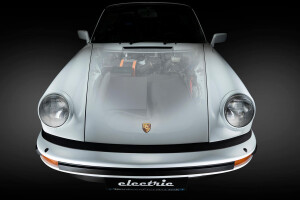 News
NewsElectric Porsche 911 made in Bulgaria is powered by BMW i3 running gear
The fully-electric 911 is the Munich/Stuttgart/Bulgaria mash-up no one expected
-
 News
News2023 BMW i3: Electric BMW 3 Series revealed for China
BMW's latest electric offering is a new-generation i3 – except it's not entirely new, and it's not coming here
-
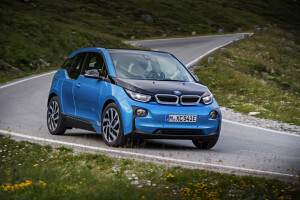 Features
FeaturesBMW i3: Driven to Extinction
The first EV to take home the COTY gong... gets gonged
-
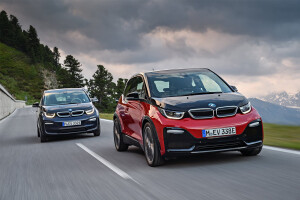
BMW i3 to go out of production in July 2022
-
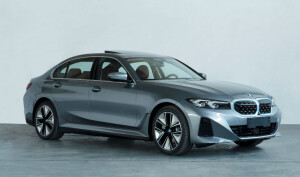
BMW i3 sedan specs leaked
-
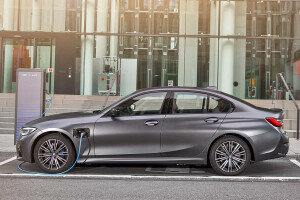
2022 BMW i3: Electric 3 Series spied
-

World EV Day: New models lead BMW's Australian electric charge


